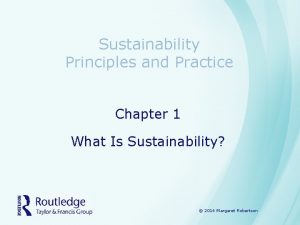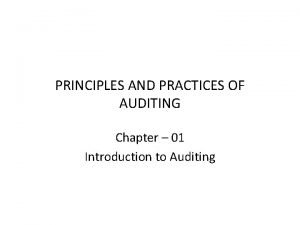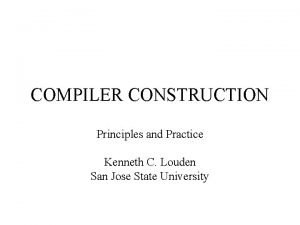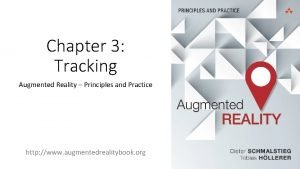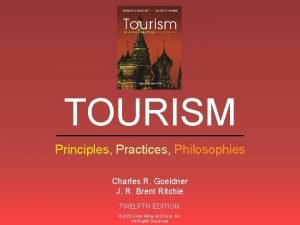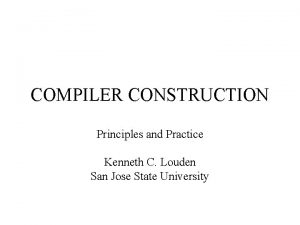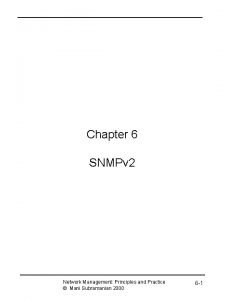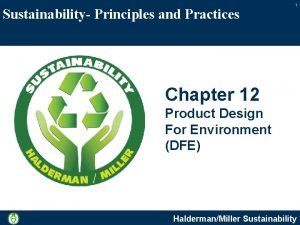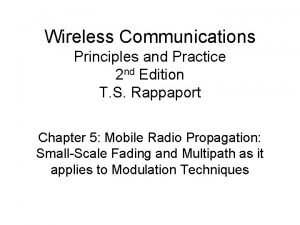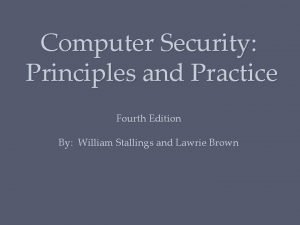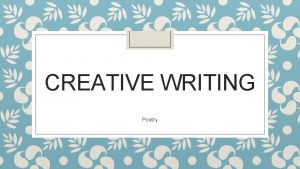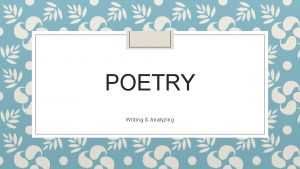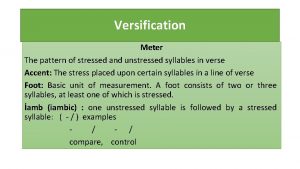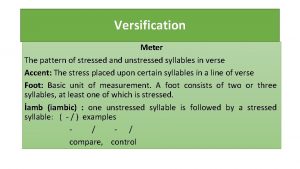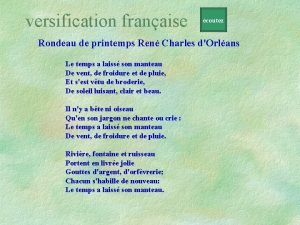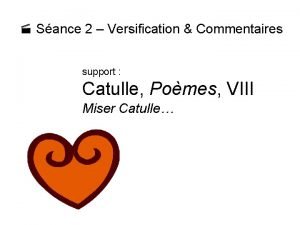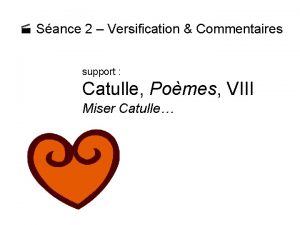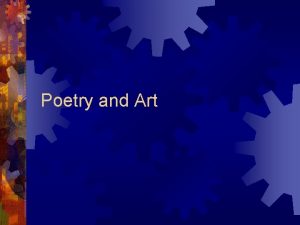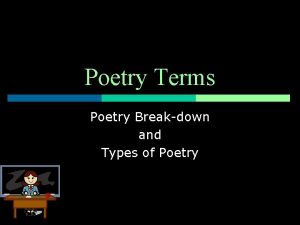Poetry Versification The Principles and Practice of Writing
















- Slides: 16

Poetry: Versification: The Principles and Practice of Writing Verse Poetry Unit English 1 A 2010

What is a poem? • Take 2 minutes and jot down all the elements that a work must include to be considered a poem? • What is the length? • What is the point of view? • Etc.

A Poem • A poem is a composition written for performance by the human voice. • Simultaneous engagement of eye and ear • What must your eye be attentive to? Your ear? • What a poem says or means is the result of how it is said.

My Papa’s Waltz By Theodore Roethke The whiskey on your breath Could make a small boy dizzy; But I hung on like death: Such waltzing was not easy. The hand that held my wrist Was battered on one knuckle; At every step you missed My right ear scarped a buckle. We romped until the pans Slid from the kitchen shelf; My mother’s countenance Could not unfrown itself. You beat time on my head With a palm caked hard by dirt, Then waltzed me off to bed Still clinging to your shirt.

Classification • Poetry can be classified into 3 broad categories: • Epic: a long narrative poem, frequently extending to several “books” or sections – John Milton’s Paradise Lost – Homer’s The Odyssey

Classification • Dramatic: Poetry, monologue, or dialogue, written in the voice of a character assumed by the poet – Alfred Lord Tennyson’s Ulysses – Robert Browning’s My Last Duchess

Classification • Lyric: originally, a song performed in ancient Greece to the accompaniment of a small harplike instrument called a lyre. The term is now used for any fairly short poem in the voice of a single speaker, although that speaker may sometimes quote others. • “I” in the poem is not necessarily the author.

Rhythm • The sequence of syllables (stressed and unstressed) • What we hear when we read the poem aloud

Meter • If a poem’s rhythm is structured into a recurrence of regular/approximately equal units, we call it meter • Accentual-syllabic meter: most common metrical system in English poetry – Iambic: an unstressed followed by a stressed syllable • It was/ the best/ of times/ it was/ the worst/ of times – Trochaic: a stressed followed by an unstressed syllable • London/ bridge is/ falling/ down

Meter – Anapestic: two unstressed syllables followed by a stressed syllable • The Assyr/ ian came down/ like the wolf/ on the fold – Dactylic: a stressed syllable followed by two unstressed syllables • Woman much/ missed, how you/ call to me, call to me

Meter – Spondaic: two successive syllables with approximately equal strong stresses • Listen!/ you hear/ the grat/ in roar – Pyrrhic: two successive unstressed or lightly stressed syllables

Meter: Line Lengths • Monometer: one foot • Diameter: two feet • Trimeter: three feet • Tetrameter: four feet • Pentameter: five feet • Hexameter: six feet • Heptameter: seven feet • Octameter: eight feet

Varying the Pattern of Poetry • An important factor in varying the pattern of a poem is the placing of its pauses, or caesurae • End stopped • Run-on lines • Enjambment: the thrust of the incompleted sentence carries on over the end of the verse line

Rhyme • End rhyme • Internal rhyme • Slant rhyme • Eye rhymes • Vowel rhyme (assonance)

Poetic Form • Blank Verse: unrhymed iambic pentameters; standard meter for Elizabethan poetic drama; no verse form is closer to the natural rhythms of spoken English • Couplet: two lines of verse, usually coupled by rhyme • Tercet: a stanza of three lines linked with a single rhyme

Poetic Form • Quatrain: a stanza of four lines, rhymed or unrhymed • The Sonnet: a poem of fourteen iambic pentameters linked by an intricate rhyme scheme • Villanelle: a French verse; five tercets rhyming aba followed by a quatrain rhyming abaa
 Hypometric line
Hypometric line Lyric vs narrative poetry
Lyric vs narrative poetry Practice assessor feedback examples
Practice assessor feedback examples Sustainability principles and practice
Sustainability principles and practice Objectives of auditing
Objectives of auditing Computer security principles and practice
Computer security principles and practice Computer security principles and practice solutions
Computer security principles and practice solutions Compiler construction principles and practice pdf
Compiler construction principles and practice pdf Augmented reality: principles and practice
Augmented reality: principles and practice Tourism
Tourism Compiler construction: principles and practice
Compiler construction: principles and practice Network management principles
Network management principles Sustainability principles and practice
Sustainability principles and practice Computer security principles and practice 4th edition
Computer security principles and practice 4th edition Network management principles and practice
Network management principles and practice Wireless communications: principles and practice
Wireless communications: principles and practice Computer security principles and practice
Computer security principles and practice



